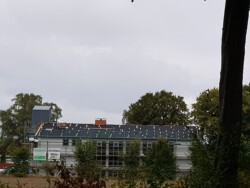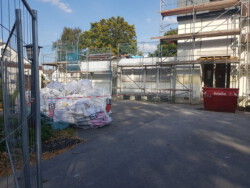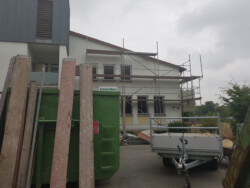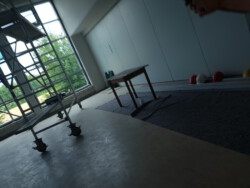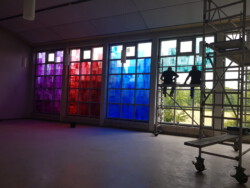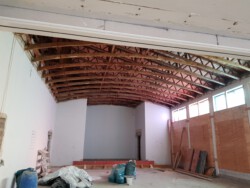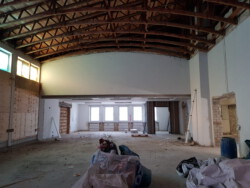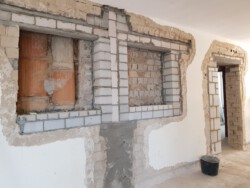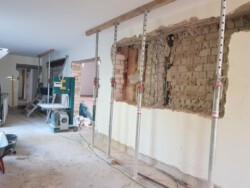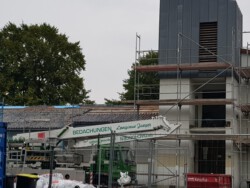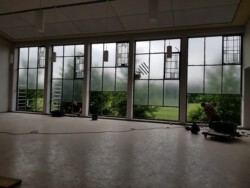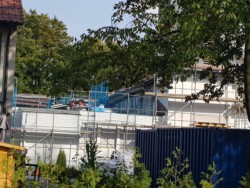New Synagogue
Even from a distance, a Star of David visible in all directions and illuminated at night high on the tower proves: Jews live in Unna and there has been a new synagogue since the inauguration on July 4, 2019.
Inside the synagogue building, other Jewish symbols are architecturally integrated:
Sand from the Negev desert is worked into the floor of the prayer hall, so you always walk a bit on Israeli soil. The light-flooded floor-to-ceiling windows shine in the 12 colors of the tribes of the Jewish people, the 248 colored window surfaces and 365 squares with the Stars of David on the wallpaper on the left and right of the “Bimah” (Hebrew: stage, the lectern for reading the Torah) add up the number of 613 mitzvot, the do’s and don’ts in Judaism. Even the color of the back wall has a special feature: it contains the particularly durable and specially produced ink that a “sofer” (Hebrew: scribe) uses when he copies the Torah on a roll of parchment. In the two doors of the Torah ark, the “Aron haKodesh”, the colors of the 12 tribes of Israel are also visible as panes of glass.
Above the Torah ark, numerous points of light symbolize a starry sky: It is the constellation of July 4, 2019, the day the synagogue was inaugurated at 11 a.m., seen from Unna in the direction of Jerusalem.
In the entrance area of the synagogue, the names of the Jewish men, women and children who were victims of the Shoah are engraved in mirror writing on the left side. There is a mirror on the opposite side. Viewers see themselves and can read the names of the victims in the mirror. In this way, the former community of Jews in Unna is firmly connected to the Jewish community, which was re-established in 2007. To the right are the names of the deceased parishioners.
In addition to the kosher kitchen, in which the special dietary laws of a Jewish community are observed, the synagogue also has meeting rooms. One of these is the Kiddush room, where members meet after the service for the Kiddush, the blessing over wine and bread. There, in a wall niche with the blessing in Hebrew and German, a three-dimensional disk with a grape motif completes the architecturally processed Jewish symbolism of the synagogue.


